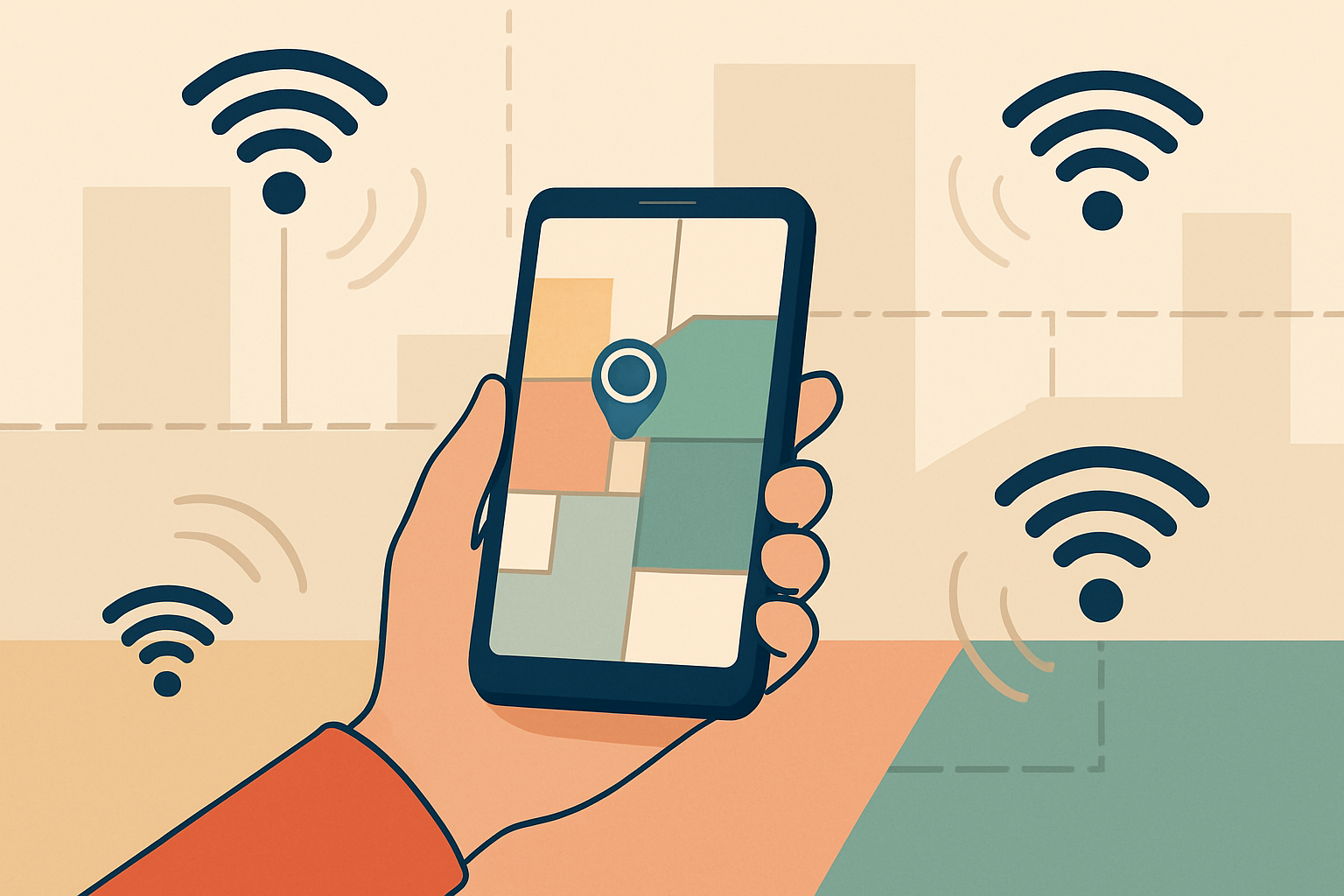
GPS is great outside, but it struggles to function effectively inside buildings. Walls block signals, elevators and people move around, and accuracy drops. Castañón-Puga et al. describe a simple idea that works indoors using what most places already have: Wi-Fi. Instead of trying to pin your exact coordinates, the phone figures out which “zone” you’re in—like a specific room in a museum or a corner of a classroom floor—by listening to the strength of nearby Wi-Fi access points. Think of it like a scent trail: your phone “sniffs” the signal from at least three routers and compares that pattern to what it has learned before.
To make this work, someone first collects example readings in each zone. This is called fingerprinting, and it builds a radio map of the place. In open areas where zones are far apart, three access points are usually enough. When zones are close together—such as two rooms side by side—adding a fourth access point helps the phone distinguish between them. Real life is messy, though. Signals bounce off walls, people walk by, and routers get moved. The authors tackle this issue with two tools: a clustering step that groups similar signal patterns, and fuzzy logic, which states, “this looks mostly like Zone 2, but a bit like Zone 1,” providing a more realistic assessment than a hard yes/no. If the app receives unusual readings—perhaps one router drops out—it can disregard those faulty samples and try again, ensuring the final guess remains reliable.
There are two phases. The heavy work is done offline: setting up the routers, walking around to collect Wi-Fi readings, and training the model. After that, the app’s online phase is fast. When you open the app in the building, it listens once, compares the data to the learned patterns, and returns the zone in milliseconds. The team tested this in places where young people actually go—an interactive science museum, a university floor with numerous devices, and a typical house. Even with noise from crowds and gadgets, the zone-by-zone approach achieved high accuracy once the training utilized the optimal number of access points and sufficient sample data.
What about battery life? During everyday use, the quick “where am I?” check is lightweight—far less demanding than streaming video. Most of the power cost is associated with the one-time training walks, which you won’t do as a visitor. That makes zone-level indoor location practical for things you’d actually use: museum guides that change as you step into a new exhibit, campus apps that auto-open the right classroom materials, or smart-home helpers that switch lights and music when you move between rooms. The big takeaway is that you don’t need special hardware to get helpful indoor location. With the Wi-Fi that’s already around you, a handful of example scans, and a model that embraces uncertainty rather than fighting it, your phone can figure out the right room—and do it quickly and quietly in the background.
Reference:
Castañón-Puga, M., Salazar, A., Aguilar, L., Gaxiola-Pacheco, C., & Licea, G. (2015). A Novel Hybrid Intelligent Indoor Location Method for Mobile Devices by Zones Using Wi-Fi Signals. In Sensors (Vol. 15, Issue 12, pp. 30142–30164). https://doi.org/10.3390/s151229791
Privacy Notice & Disclaimer:
This blog provides simplified educational science content, created with the assistance of both humans and AI. It may omit technical details, is provided “as is,” and does not collect personal data beyond basic anonymous analytics. For full details, please see our Privacy Notice and Disclaimer. Read About This Blog & Attribution Note for AI-Generated Content to know more about this blog project.